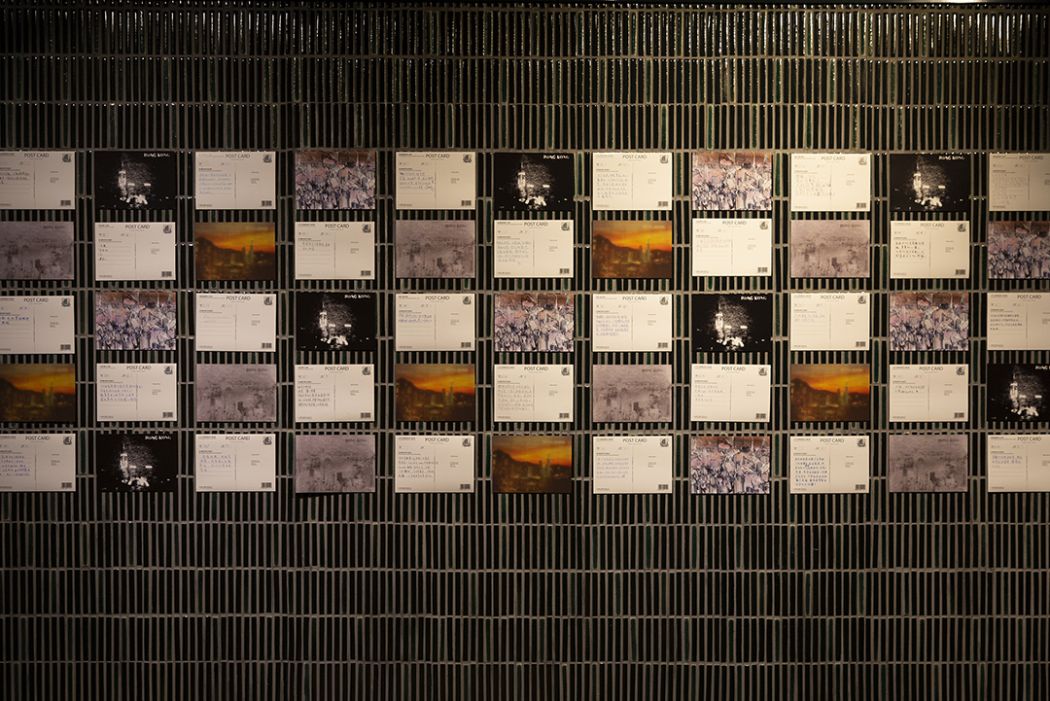By Mark Eggleton
Reflecting on Hong Kong artist’s Siu Wai-hang powerful video work Open Ta Kung Pao, artist Ben Quilty says art is at its best when it represents the human condition.
Winner of last year’s Hong Kong Human Rights Arts Prize (HKHRAP), Siu Wai Hang’s work depicts the July 1, 2018 pro-democracy protest as it passed the headquarters of state-owned newspaper Ta Kung Pao.

Artist and award judge Ben Quilty found many of the works entered in last year’s prize powerful because he felt the artists were driven by their own lives to create the pieces.
“They’re not just entering an art prize. They’re actually standing up for something. And that’s when art can be at its best,” he says.

One of Australia’s most revered artists and social commentators, Quilty says judging the Arts Prize was a great honour and he didn’t think twice about saying yes when asked to be one of the judges because of the political and social situation unfolding in today’s Hong Kong.
“It’s just such a fraught part of the world, with such a distinctly uncertain future as it confronts many human rights issues,’’ he says.

“I was so intrigued to know more about it. Being able to judge a prize like that, you’re instantly exposed to so many artists that you wouldn’t otherwise be able to see and know about.”
Deep sense of empathy
Quilty, who has served as Australia’s official war artist in Afghanistan and more recently visited refugee camps in Syria, has long been passionate about depicting the human condition. It was something instilled into him early by his parents as he grew up in Sydney, and who, he says “made me very aware of the world”.
“Somehow, they taught me, by about eight or ten, to have a very deep sense of empathy, which I do think you’re taught. It’s a blessing and a curse but I wouldn’t give it up for anything, because they’ve given me the ability to feel the world, and the people in the world.”

He says that feeling of empathy runs through many of HKHRAP prize entrants and it’s often very personal.
It’s about what people know or have experienced themselves. For example, a lot of the entries depicted the struggles faced by domestic staff in Hong Kong especially Filipino women.
“They’re responding to something that’s in their part of the world which I found very moving. It is their own stories or the hardship of people that live in their community and both I’ve found are equally relevant.”
Moreover, Quilty was also moved by some of the works which draw on Hong Kong’s current political situation in a gentle, sophisticated way.

He acknowledges it is difficult for Hong Kong citizens to be overtly critical of the Chinese government, but there are works dealing with how the Chinese are almost “actively dehumanising the population” by turning them into mere numbers. And it’s also a comment on a wider issue in the digital economy.
Communal experience
As to why art is so often at its most powerful portraying pain, Quilty draws on the work of Picasso, who lived through war “but lived a pretty blissful, peaceful existence most of his life”.
“His greatest work is Guernica. It’s about the horror of war. The horror of war isn’t horrible without the human condition and the way war affects the humanity involved in it.
“So, whether it’s war, human rights abuses or the dysfunction of a community, when people in those communities respond using art, or literature or music, their lived passion ensures what they create is really profoundly powerful.”

One particular work which stirred Quilty’s emotions was first runner-up Sophie Cheung Hing Yee’s, mixed media piece Soften stones 1: Tombstone for 61 HK students suicide since 2016.
The piece comments on the pressure placed on children in the city’s hyper-competitive education system and for Quilty the work was hugely poignant – imagining kids sitting in rows, “spending hours and hours of their lives rote learning, and in the end, having the same job as thousands of other people”.
“It’s just a beautiful little thing – a contemporary tombstone and a metaphor for modern China.”

Quilty can be quite critical of Chinese heavy-handedness when it comes to human rights. He cites the first year of the Hong Kong Art Fair when it showed in Beijing and there were “artists who made quite critical comments, although subtle and sophisticated comments about China, and instead of shutting the show down, they actually arrested the staff handing out catalogues at the beginning of the exhibition. They were just poor Chinese people trying to earn a living”.
It’s this sense of injustice which drives much of Quilty’s own work and it’s what he found inspiring judging the HKHRAP entries.
“I always come back to it, and I think it’s just that I’m human and I’m interested in my own humanity, and then the collective humanity in all of us. How we interact is so intriguing and pertinent as the world shrinks around us.”
HKFP is a Hong Kong Human Rights Arts Prize media partner.
